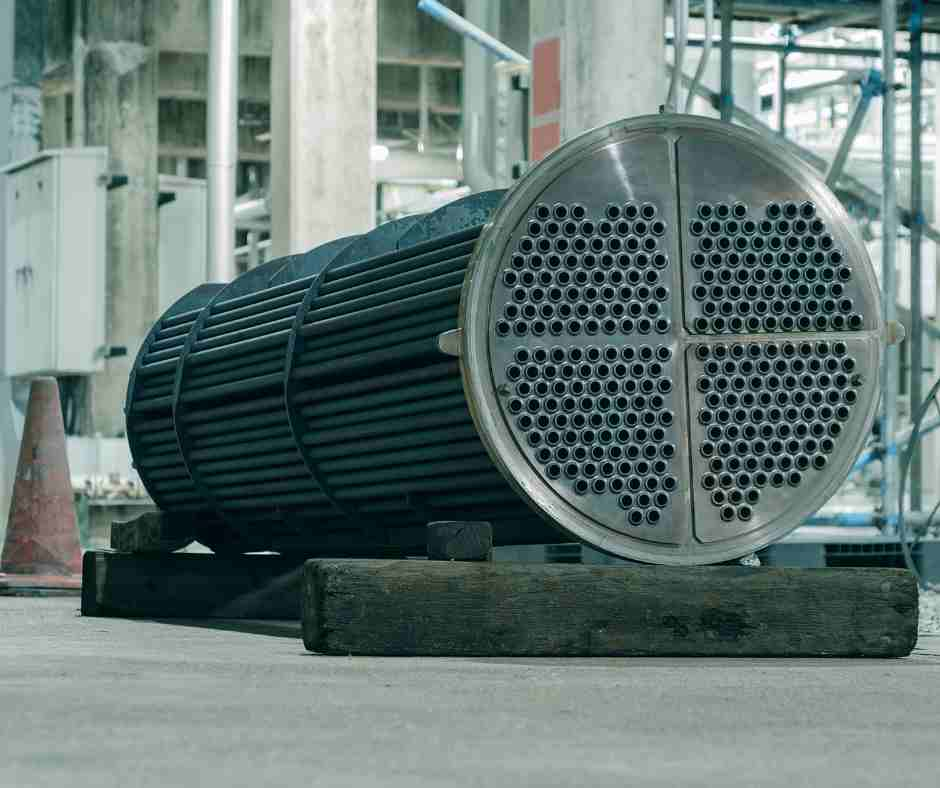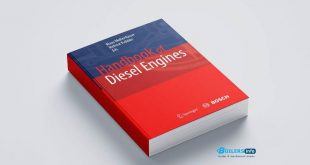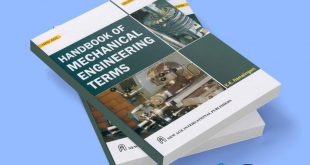Heat Exchanger Design Guide
Heat exchangers are essential in many industrial processes, transferring heat between fluids or gases. These devices are crucial for industries such as chemical processing, HVAC, power generation, and oil refining. This guide will explore the design considerations, performance calculations, and types of heat exchangers used across various applications.

Table of Contents
ToggleHeat Exchanger Design
Designing a heat exchanger requires selecting materials, determining the heat transfer area, calculating the heat transfer rate, and ensuring overall efficiency. The design process also involves choosing the right heat exchange configuration, flow arrangements, and size, which must be suitable for the specific application.
Types of Heat Exchangers
- Shell and Tube Heat Exchangers: These are typically used in high-pressure applications. They consist of a series of tubes where one fluid flows through the tubes and another around them in the shell.
- Plate Heat Exchangers: These heat exchangers have a series of plates that create channels for the fluids. They are more compact than shell and tube exchangers and are often used in low-pressure applications.
The appropriate selection of a heat exchanger depends on factors like temperature differences, material compatibility, pressure ratings, and available space in the system.
Calculations of the Temperature Differences: LMTD and CMTD
Understanding the temperature differences is crucial to determining the heat transfer rate in heat exchangers. There are two primary methods for calculating temperature differences:
Logarithmic Mean Temperature Difference (LMTD)
LMTD calculates the temperature difference between the hot and cold fluids in a heat exchanger, accounting for variations in temperature at the fluid’s entry and exit points. It is a standard method used for sizing heat exchangers and estimating their performance.
Corrected Mean Temperature Difference (CMTD)
CMTD is used to correct the temperature difference in cases where flow conditions are non-ideal, such as in multi-stream exchangers. It provides a more accurate temperature profile for these systems, improving the precision of heat exchanger performance predictions.
Heat Transfer Coefficients and Pressure Losses in Convective Heat Transfer
The heat transfer coefficient indicates how efficiently heat is transferred between the fluid and the heat exchanger surface. It is influenced by the type of fluid, flow regime, and surface area of the exchanger. In convective heat transfer, calculating the pressure losses is important for understanding the power requirements for pumping fluid through the exchanger.
Pressure losses are caused by the friction between the fluid and the surface of the heat exchanger, and by changes in the flow direction. These losses must be calculated to ensure the proper operation of the heat exchanger and to optimize energy consumption.
Geometrical Heat Exchanger Calculations
The geometry of a heat exchanger plays a significant role in its thermal and hydraulic performance. It is essential to calculate the size, arrangement, and layout of key components, including the tubes, baffles, and surface area, to maximize heat transfer efficiency.
- Tube Length and Diameter: These determine the heat transfer area and the pressure drop across the exchanger.
- Baffle Spacing: In shell and tube heat exchangers, the spacing between baffles controls the flow distribution and enhances heat transfer.
In plate heat exchangers, geometrical considerations focus on the number of plates, their shape, and how the fluids flow through the system.
Thermodynamics and Heat Powered Cycles
Thermodynamics is crucial to understanding how heat exchangers function within power generation and refrigeration cycles. Heat-powered cycles, such as Rankine, Brayton, and refrigeration cycles, rely on heat exchangers to transfer heat from one fluid to another to perform work or cooling.
- Rankine Cycle: Common in steam power plants, the Rankine cycle uses heat exchangers to convert water into steam to drive turbines.
- Brayton Cycle: This cycle, used in gas turbines, incorporates heat exchangers (air pre-heaters) to increase the intake air temperature before it enters the compressor.
- Refrigeration Cycle: In refrigeration, heat exchangers help transfer heat from a cold space to the warmer environment.
The efficiency of these thermodynamic cycles is heavily dependent on the performance of the heat exchangers involved.
Overall Heat Transfer Coefficient and Temperature Profile
The overall heat transfer coefficient (U) is a parameter that combines all the heat transfer resistances in a heat exchanger. It determines the rate at which heat is transferred from one fluid to another.
Temperature profiles are crucial for understanding how heat is transferred across the exchanger. In countercurrent exchangers, the temperature profile is typically more uniform, which leads to more efficient heat transfer compared to parallel-flow systems.
Chemical Engineering Calculations
In chemical engineering, heat exchangers are used in processes like distillation, absorption, and reaction engineering. The design calculations for these applications must consider not only heat transfer but also mass transfer and reaction kinetics.
- Heat Exchanger Network Design: This involves optimizing heat recovery between process streams to minimize energy consumption.
- Material Balances: These calculations determine the heat required for a given process and help design the heat exchanger.
- Energy Integration: This focuses on using heat exchangers to recover and reuse energy within a system.
Chemical engineering calculations are essential for designing heat exchangers in large-scale industrial applications.
Design of Condensers
Condensers are a type of heat exchanger used to condense vapor into liquid by releasing latent heat. Common in power plants and refrigeration systems, condensers are designed to reject heat efficiently from the vapor to the coolant.
The design considerations for condensers include:
- Type Selection: This depends on the application and can range from air-cooled to water-cooled and evaporative condensers.
- Heat Transfer Area: This determines the amount of surface area needed to reject the heat.
- Flow Arrangement: The proper arrangement of fluids inside the condenser ensures maximum heat transfer and minimal energy consumption.
Design of Thermosiphon Reboilers
Thermosiphon reboilers are used in distillation columns and rely on natural convection to circulate fluid and transfer heat. Their design involves considering:
- Heat Duty: This is the amount of heat required to vaporize the liquid.
- Flow Arrangement: Thermosiphon reboilers use natural circulation without mechanical pumps, making their design more energy-efficient.
- Temperature Control: The reboiler must maintain a consistent temperature to ensure effective distillation.
These reboilers are commonly used in chemical processes where efficiency and energy savings are essential.
Introduction to Thermal and Fluid Engineering
Thermal and fluid engineering is the study of heat transfer, fluid flow, and thermodynamics. This field is fundamental to the design of systems for power generation, refrigeration, HVAC, and chemical processing. Understanding these principles helps engineers optimize heat exchanger performance, minimize energy consumption, and improve process efficiency.
Double Pipe, Helical Coil, and Cross Flow Heat Exchangers
There are several types of heat exchangers, each suited for specific applications. Some common types include:
- Double Pipe Heat Exchanger: Simple and cost-effective, this heat exchanger consists of two concentric pipes where one fluid flows through the inner pipe and the other around it in the outer pipe.
- Helical Coil Heat Exchanger: This design uses coiled tubes to increase heat transfer by promoting turbulence. It is often used for viscous fluids and when space is limited.
- Cross Flow Heat Exchanger: In this type, fluids flow perpendicular to each other. It is commonly used in air-to-air heat exchangers, such as in HVAC systems.
Finned Tube Heat Exchangers
Finned tube heat exchangers use extended surfaces (fins) to enhance heat transfer. The additional surface area created by the fins allows for more efficient heat exchange, particularly in systems where space is limited or where high heat transfer rates are required. They are commonly used in refrigeration and air conditioning systems.
Conclusion
Designing an efficient heat exchanger requires careful consideration of several factors, including thermal and hydraulic performance, material properties, and specific application needs. By understanding different types of heat exchangers, thermodynamic cycles, and performance calculations, engineers can design systems that optimize heat transfer and reduce energy consumption. Whether it is a simple double pipe exchanger or a complex condenser, the role of heat exchangers in industrial applications is fundamental to improving process efficiency and ensuring reliable operation.
 Boilersinfo Boiler and Mechanical Power Digital Library
Boilersinfo Boiler and Mechanical Power Digital Library





